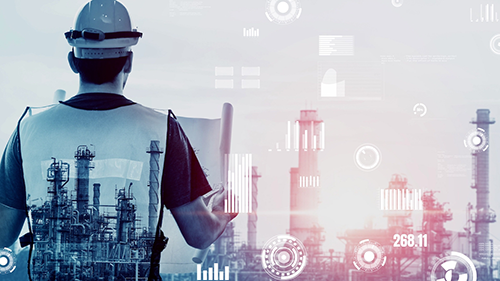How COVID Accelerated Connected Worker Technologies and the Future of Work for the Industrial Enterprise
The pandemic’s impact on the workforce has been acutely felt across industries, especially industrial enterprises, with worker demands and habits shifting dramatically. Standard communication and collaboration technologies were rendered inadequate for the massive upheaval as companies and supply chains faltered, and millions of people lost jobs and income as COVID spread. Plants and factories didn’t have enough workers to comply with the changing safety protocols, and frontline responders were stretched to their limits, needing to be in multiple places at once.
Amidst this backdrop of mass global unemployment, the truly unthinkable happened—the Great Resignation. As a result, upskilling the workforce, analytics, and insights, increased collaboration, and improved workforce mobility took center stage as industrial enterprises struggled to keep businesses and the global economy running. Skeleton crews of workers had to be connected wherever they were, whether in the field, factory, headquarters or even at home. The suite of these technologies is collectively known as Connected Worker.

So, what exactly is Connected Worker? Connected Worker solutions help improve the way humans work in industrial settings by providing an effective way for field workers to visualize, consume and communicate actionable information. This includes connectivity, cybersecurity, analytics, and worker health and safety. When deployed and integrated effectively, these solutions not only connect field workers with operations teams and subject matter experts, they intelligently deliver resources through augmented and assisted reality technologies to drive increased safety, efficiency, and productivity.
Connected Worker solutions can include hardware and extended reality (XR) wearable devices, software, as well as all the resources necessary to optimize them such as systems integration, professional services, and training. The business benefits include optimized maintenance procedures, faster response times for critical incidents, improved uptime, and critically, expedited training and tribal-knowledge transfer. Connected Worker engages the full potential of connectivity to provide an on-ramp to simulations and digital twins that empower workers to make faster, more informed decisions.
During COVID, demand for Connected Worker Solutions has accelerated exponentially and cut across industries from manufacturing to utilities, construction, and beyond. Despite these very different businesses, the common thread is the need to accelerate knowledge transfer, increase efficiency with a smaller workforce, and optimize communications while balancing employee safety. IoT platforms from companies like PTC and wearable devices and software solutions from the likes of Realwear and Guardhat have been highly successful in increasing efficiency while allowing rapid, remote upskilling of the workforce.
“When we look at the industrial space, we see that workers are focusing on truly leveraging the data, minimizing all those silos that have been around for decades. They are still there, but with IoT, AI, ML, AR/VR, metaverse, and DT, with all this connected technology, we are getting better to be able to tap all this data from any place, anytime. Now companies, partners, and supply chains can be transparent and create wonderful collaborations. Imagine the improved work streams with all this data transparency. We are talking predictive management, and asset maintenance, the sky is the limit here. Think of all the safety improvements. And perhaps, most importantly, we can start to reduce our waste with these smart factories. It all starts with being connected to the right data. That’s a truly connected worker.” Peggy Smedley, editorial director and president of Specialty Publishing Media and host of the Peggy Smedley Show.
According to Guardhat CEO and founder Saikat Dey: “Frontline industrial workers today are often on their own for all or part of their workday. When they get best-in-class audio and visual communications, as desk-based workers have, they can work more efficiently and safely, improving quality, productivity, and more. The pandemic catalyzed worker-centric, platform-based connected worker solutions, especially for the lone worker and distributed teams, allowing them connectivity to experts, information, and most importantly safety at the edge.”
Training and education, which once required extensive capital investment for resources to travel the world and deliver their courses, can now be delivered remotely, at the click of a button; an expert on the other side of the planet can interact with a trainee via wearable technology that, several years ago, was only just starting to be commercially viable.
Ahmad Ababneh, Vice President at Pacific Gas and Electric Company, states: “Our Engineering and Design teams were able to transition hundreds of employees to full-time remote work with no negative impacts by deploying new Connected Worker solutions and tools. We observed an increase in productivity through the elimination of travel time and the use of LIDAR (Light Detection and Ranging) collected data to assist in developing remote engineering designs. In addition, onboarding new employees have been more efficient by eliminating logistic costs of onsite training staff, real estate, cleaning, and food services. We on-boarded several dozens of new employees with IT needs delivered remotely and engaged with our HR and training partners to develop a virtual onboarding experience that is effective.”
COVID has been the catalyst for the rapid advancement of the Connected Worker but the benefits of these technology solutions will live and grow well beyond the pandemic, reshaping industrial enterprises and ultimately ushering in a new era of communications, hybrid work environments, and industrial metaverses.
